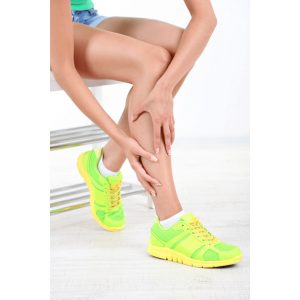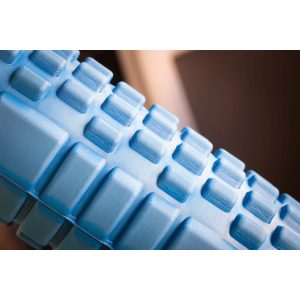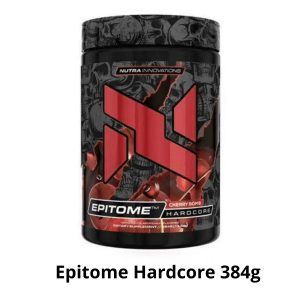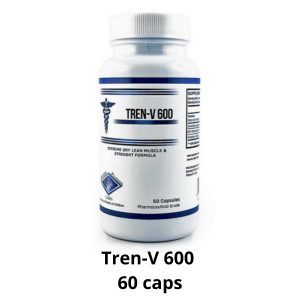
Sore muscles – what are they and how to deal with them?
Sore muscles – what are they and how to deal with them?
 Characteristic soreness of muscles is a feeling known to all people who practice physical activity. Although muscle soreness is a viral phenomenon, the general knowledge about it is still minimal. For example, many people confuse sore muscles with delayed onset muscle soreness (DOMS). Such mistakes happen often; that is why every activity enthusiast should learn about muscle soreness. What are they, and how to deal with them?
Characteristic soreness of muscles is a feeling known to all people who practice physical activity. Although muscle soreness is a viral phenomenon, the general knowledge about it is still minimal. For example, many people confuse sore muscles with delayed onset muscle soreness (DOMS). Such mistakes happen often; that is why every activity enthusiast should learn about muscle soreness. What are they, and how to deal with them?
What are sore muscles?
In the beginning, we should think about the name of the described ailment. Well, the term “sour muscles” actually has something to do with acid. More precisely, it concerns the famous lactic acid produced in muscles during intense physical effort. The body releases this acid when the muscles are not supplied with enough oxygen.
This condition usually occurs with prolonged exertion, which increases the muscles’ demand for oxygen. At some point, the body can no longer supply the muscles with sufficient oxygen, which triggers several chemical reactions. Their effect is, among others, disruption of glucose metabolism and the appearance of lactic acid in muscle fibers.
Of course, the mere presence of lactic acid in muscles can cause pain and a burning sensation. However, any discomfort caused by lactic acid occurs during or immediately after training. If pain persists for several tens of consecutive hours, it is not the result of soreness. These usually subside as soon as 1-2 hours after the workout.
Delayed onset muscle soreness (DOMS) – the true face of soreness
Many people who train complain about “soreness,” which only appears on the second day after the workout. It is worth noting that such pain is generally not due to the presence of lactic acid. If pain persists for 2-3 days after training, it is the effect of DOMS – Delayed Onset Muscle Soreness.
DOMS is a condition caused by multiple micro-injuries that have developed in the muscles during exercise. The extent of such injuries depends mainly on the intensity of training and the load used. Therefore, the degree of training is also essential. Admittedly, even professional athletes sometimes struggle with DOMS. However, such an affliction affects mainly beginners and people returning to exercise after a specific break. DOMS can also occur when someone has suddenly increased the intensity of their training units. Therefore, to reduce the risk of DOMS, you should gradually increase the load and power of your training.
Thus, it should not be difficult to distinguish between DOMS and soreness. Virtually any pain that persists for several hours or tens of hours after training is caused by DOMS. Of course, the exception to this rule is pain caused by injury. So if the pain you feel after exercise is extreme, it is worth consulting your doctor to diagnose the problem.
How to deal with soreness and DOMS? Is it possible to exercise?
The appearance of soreness does not require any action. After the workout, the body will supply the missing oxygen to the muscles, so the lactic acid will be removed quickly. If someone wants to speed up the process, a cold bath or ice pack can be recommended. Both of these methods speed up circulation, which means that oxygen will reach the muscles faster.
Completely different recommendations apply to the management of DOMS. It is already known that this condition results from excessive muscle overload. However, such pain may have a completely different intensity. Therefore, recommendations for training also depend on its degree. If the pain is extreme and pronounced, you should set aside another day or two for recovery. Then all physical activity should be limited to walking, going to the pool, or other recreational activities. However, if you have mild muscle soreness, you may be tempted to do your planned workout. However, such action mustn’t engage the sore muscles too much.
Of course, with regular training, DOMS symptoms are less frequent and generally less intense. But, on the other hand, muscle soreness can sometimes affect every athlete. So what should be done in such a situation? As you already know, rest and complete recovery of damaged muscle fibers is the key to success. However, to make it more effective, it is worth following some proven tips.
First of all, after finishing a hard training unit, you should take care to relax the damaged muscles. It is an excellent idea to do some light stretching immediately after your workout. In addition, take a warm bath in the evening, which is ideal for relaxing the body and mind. More advanced individuals may also choose to massage or roll their overworked muscles; however, you need to make sure that they are performed correctly in the case of such treatments.
If muscle soreness does occur, do not spend the whole day in a chair. Instead, leisurely activity in the form of walking or swimming would be much more beneficial. This will give your muscles an incentive to recover faster.
Summary
 Most of the complaints referred to as soreness have nothing to do with the secretion of lactic acid. A possible soreness can only occur during or immediately after exercise. On the other hand, any pain that lasts for 2-3 days is a symptom of DOMS. Delayed onset muscle soreness is a condition caused by numerous micro-injuries to the muscle fibers. They are mainly caused by intensive training with heavy loads. The management of DOMS depends on the degree of soreness you are experiencing. If the pain is severe, you should refrain from the activity. If, on the other hand, the pain is mild, you should simply spare the sore muscles.
Most of the complaints referred to as soreness have nothing to do with the secretion of lactic acid. A possible soreness can only occur during or immediately after exercise. On the other hand, any pain that lasts for 2-3 days is a symptom of DOMS. Delayed onset muscle soreness is a condition caused by numerous micro-injuries to the muscle fibers. They are mainly caused by intensive training with heavy loads. The management of DOMS depends on the degree of soreness you are experiencing. If the pain is severe, you should refrain from the activity. If, on the other hand, the pain is mild, you should simply spare the sore muscles.








